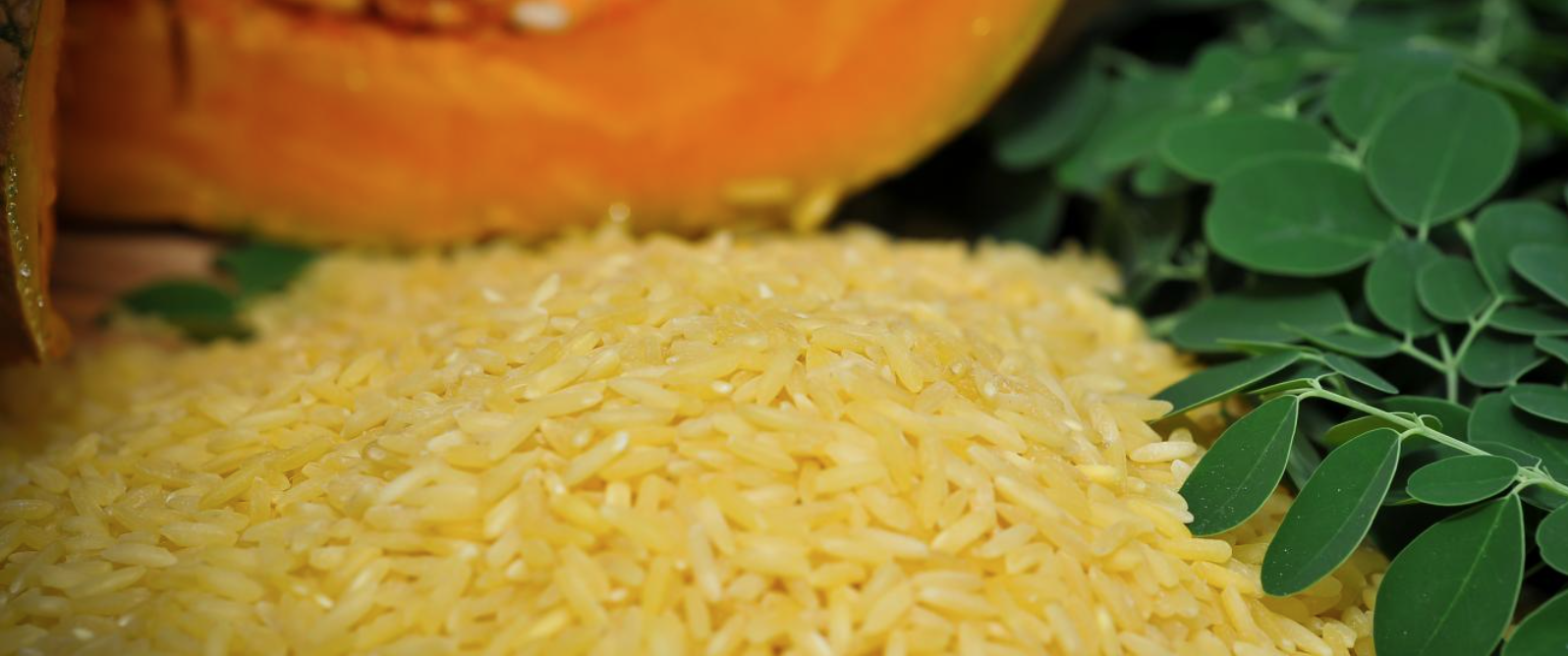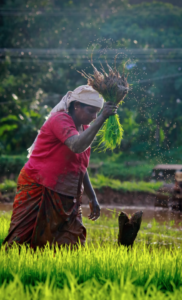Is a GMO revolution arriving in India?

Geneticists have created Vitamin A-fortified rice, or "golden rice" to combat VAD, which often results in night blindness and can even be fatal(Photo: IRRI)
In August, for the first time ever, it was announced that India will import 1.5 million tonnes of genetically modified (GM) soymeal to help the poultry industry tide over the crisis of high feed prices. This decision has been opposed by several anti-GMO activists as well as environmentalists, who believe that this decision is signalling a dangerous future where India may become more GMO-friendly, like countries such as the US, which is surging ahead in production and use, and even India’s neighbour Bangladesh, which has been experimenting with GM brinjal crops and is set to let in the genetically modified golden rice quite soon.
“Unfortunately, this was a wrong decision taken by government of India, forced by local prices going up in the poultry industry,” G V Ramanjaneyulu, an agricultural scientist who works on public policy issues impacting on food systems and farmers livelihoods, tells Media India Group.
Activists warn that introduction of GM crops, however slightly, could lead to the opening of floodgates and causing long-term, irreversible damage.
“The market may open up if Indian policy makers and politicians do not understand the threat. This is how the industry plays a role: they create a kind of scarcity and imbalance in the pricing. India has got the premium advantage of being a non-GM soya grower, and I do not understand how this situation arose, how India suddenly went from being a soya meal exporter to importer,” adds farm rights activist Kapil Shah, MD at Jatan Sansthan, a grassroots NGO working with the rural population in Rajasthan.
The decision was pushed through since the Food Safety and Standards Authority of India (FSSAI) said anything that is non-food is not within its ambit, and was welcomed by corporates like Godrej Agrovet, who reportedly said that the chicken business was badly hit due to the shortage, high commodity prices and Covid-19, raising raw material prices from INR 40/kg a year ago to INR 95/kg.
Can GMs pave way for India to achieve food security?

GM advocates say India’s agriculture industry is in a crisis because of overproduction of rice and wheat, but under-production of other, low-yielding crops (Photo: Nandhu Kumar/Unsplash)
The recent announcement has reignited the conversation around an issue that has been contested for more than two decades since the entrance of GMOs into the country. Despite having a troubling malnutrition rate, with RTI data showing that more than 920,000 children in the country are “severely acute malnourished,” and millions in the country affected by poverty and hunger, India has always been reluctant to bring GMOs in.
Genetically modified crops are plants used in agriculture, the DNA of which has been modified using genetic engineering methods, often to make it resistant to pests and increase yield. However, many environmentalists have argued that the concept that GM crops will help increase yield, and can be a solution to poverty, is actually a myth pushed by GMO advocates.
“If you look across the country, farmers are agitating to because the prices are too low. India is passing through a phase where there is excess food production, not a deficit. If you see the farmers in Punjab, or Hyderabad and Odisha, they are upset because there is excess production and no buyers. These arguments [about food shortage] are all outdated, issues that were prevalent in the 1960s, not now. Today, the more pertinent conversations are about conservation of natural resources, low greenhouse gas emissions, so the challenges have changed,” says Ramanjaneyulu.
In fact, a major argument against GM crops is the purported negative affect on farmers’ livelihoods. Ramanjaneyulu says that the problem that the farmers face with GM crops is that they cede total control to the companies. This is a challenge because unlike countries like Bangladesh, India’s local seed use and biodiversity is very high, and farmers often reuse their seeds, unlike in the US, when farmers do not usually reuse seeds and are largely dependent on seed companies. As farmers cannot grow their own GM seeds, they will have to purchase stock from big multinational companies at prices that are much higher than the seeds that the farmers use now, and as cost goes up, dependency will also increase.
“GMOs will not empower farmers or give them independence. It’s an IPR (intellectual property rights) issue, and it means farmers will be at the mercy of corporations. GMOs as a technology are kind of a new weapon to capture farmers’ freedom,” Shah tells Media India Group.
Certainly many farmers and activists like Vandana Shiva have been protesting against the introduction of GM crops for many years. In 2017, for example, protests were held outside the Environment Ministry when initial approval was granted to allow the commercial introduction of India’s first GM food crop, a genetically modified mustard variety developed in India, by the Genetic Engineering Appraisal Committee (GEAC), India’s apex regulator for GMOs. The crowd had chanted that it would “make farmers slaves.”
Deepak Pental, a plant genetics professor at the University of Delhi and the inventor of genetically modified (GM) mustard, says that although there has been a lot of interest in transgenic farm technologies, “ideological thinking” has been stalling the entry of GMOs for years. Moreover, he explains that while crops like rice and wheat are certainly in surplus in India, supply of other important foods is painfully low.
“Some people believe that whatever existed 100, 200 years ago was the best. It’s like vaccine hesitation, that kind of mind-set. Nothing else is overproduced in India. Other crops are giving miserably low yield, that’s why farmers don’t want to switch from wheat and rice to other crops. Why are farmers in Punjab and Haryana protesting against the farm laws? In an open market, if you have a glut of rice, your produce may not fetch enough price, and so they are worried and they want a fixed price. But why don’t they move to other crops, why don’t Punjab farmers grow soyabean, mustard, there is a huge shortage of edible oil and mustard meal, why don’t they grow those? Because they yield very little as they are suffering from so many pests and pathogens,” Pental tells Media India Group.
Due to Indian style of cooking, the country has enormous demand for edible oils like mustard oil and is heavily dependent on imports to meet these targets. GMO backers say incremental gains in productivity, hugely affected by pests, will not be enough to feed the country’s growing population.
Pental’s GM mustard was criticised for using glufosinate, a weedkiller (herbicide) similar to glyphosate, but he argues that agrochemicals are a necessary evil that must be used in recommended quantities.
“We lose about 30 pc of our crops due to lack of herbicides, so until you make them more robust, we cannot take care of diseases and pests. Western countries like Germany, where many of the renowned environmentalists are, use 4 kg of pesticides per hectare, while India uses only 600 g. We need to focus on spraying them properly, and now with drone technology we can spray it aerially without affecting the farmer as well,” says Pental.
Pental explains that mustard crop, for example, is destroyed by three or four fungal diseases. “Now if you have a solution using transgenics, why not use it instead of chemicals, why not increase the productivity, why let the fungi and acids and others eat away all your produce? As a country, you have to bring some sophistication [into the system], otherwise you will remain where you always were, destitute and poor,” he adds.
However, it is important to consider whether encouraging Indian farmers to use herbicides is necessarily the right strategy. In 2018, a US jury ruled that glyphosate-based weedkillers were linked to cancer, and the herbicide is also banned in European countries like Germany (from 2024), France and Denmark, as well as Asian countries like Vietnam and Sri Lanka (partial ban).
Countries like India and Bangladesh are some of the worst affected by nutritional deficiencies. A 2013 study showed that India has the highest prevalence of clinical and subclinical VAD among South Asian countries, with 62 pc of preschool children reported to be deficient in vitamin A and a high mortality rate, leading to an annual 330,000 child deaths. Last year, tests conducted by researchers from the Philippines-based International Rice Research Institute (IRRI), which was meant to satisfy regulatory requirements in the Philippines, Bangladesh and Indonesia, determined that golden rice, which is fortified with provitamin A, was safe, with Bangladesh set to begin cultivation. The GM crop is expected to help check malnutrition since poor children in particular are unable to access a variety of vitamin-rich foods like fruits and vegetables, which are often not covered under Centre’s Public Distribution System (PDS).
“It will definitely help in reducing vitamin A deficiency. Under-nutrition or malnutrition is due to the lack of purchasing power. People are too poor to buy food so they are dependent on government handouts, and the government can only give what is in excess, and that is wheat and rice,” says Pental.
In September last year, Centre reportedly approved biosafety field trials of two new transgenic varieties of brinjal, among the most widely available and consumed vegetables in India. A brinjal crop however, is highly susceptible to pests, particularly the fruit and shoot borer (FSB), which often affects 50-80 pc of the crop, which results in half of farmers’ input spends on pest control, and insecticides being sprayed 30 to 70 times in a five-month crop cycle. Once again, Bangladesh was a step ahead of India, with a 2018 study revealing that net yields were 42 pc higher for Bt Brinjal farmers, with a 31 pc reduction in costs per kg of produce, and a 27.3 pc increase in gross revenue per hectare.
Can GM crops cause environmental damage?

Bt Cotton, which was initially successful, may have eventually fallen prey to insecticide-resistance (Photo: Trisha Downing/Unsplash)
Despite such results, some environmentalists argue that due to a lack of long-term research, GM crops have unexplored side effects.
One way biotech or GM seeds can actually lead to farmers adopting more sustainable farming practices is through reduced tillage, which significantly reduces greenhouse gas emissions. But anti-GMO activists say this can be achieved through a multitude of other, safer, ways, like permaculture, mulching and mixed cropping. More importantly, contrary to claims, some GM crops may have actually increased the use of agrochemicals.
“Look at Bt cotton, it has not reduced pesticide use, it has actually increased it,” says Ramanjaneyulu.
Bt cotton, a genetically modified cotton which was introduced in India almost twenty years ago, was found to combat bollworm – moth larvae that commonly attack cotton crops, aiming to reduce the amount of insecticide needed in farming cotton. Today, at least 80 pc of cotton grown in each of the nine cotton-growing states of India is Bt cotton. Although initially a success with rise in crop yields and farmers’ incomes, and a drop in chemical insecticide use, recent research shows that this effect is now diminishing due to insecticide-resistance in insect populations.
Moreover, as agriculture is already a major driver of biodiversity loss and carbon emissions in India, anti-GM activists say GM will exacerbate the issue. “India has a lot of rich diversity, which would get affected: crops like brinjal and rice, which has thousands of growth varieties,” says Ramanjaneyulu.
In India, where biodiversity is already under severe stress, GM crops and their subsequent pricing may rid the country of its rich and unique inventory of agricultural biodiversity. For instance, India reportedly grows around 1,500 varieties of mango, and at the beginning of the 1970s, India reportedly had nearly 110,000 varieties of rice, but that diversity has been lost and now sadly reduced to around 6,000 different varieties of rice cultivated in the country, in part due to the Green Revolution.
“GMOs are not the real solutions of the current problems, and are the seeding material to invite all kinds of environmental crises. Because you increase the use of pesticides, biodiversity is naturally affected: agricultural biodiversity, crop diversity, and more agrochemicals means more nitrogen emissions, which will worsen the climate crisis, more chemicals in the soil hardens it and nature water harvesting fails because rainfall which is generally absorbed by the healthy soil cannot be absorbed anymore,” explains Shah.
“Most of these claims that GM does not require pesticides, herbicides have no real case. This is how they can invite attention of policymakers and gather grants for their projects. Claims should be verified with facts and experiences, and GMOS are not a new thing. It has been around since 20- 25 years, and the data of those years don’t prove the claim,” he adds.
Geneticists and scientists agree that more long-term research is required in India to determine the validity of GM claims about boosting farm incomes and cutting use of chemicals, as well as their effect on the environment and biodiversity.









